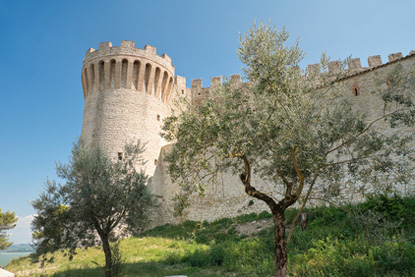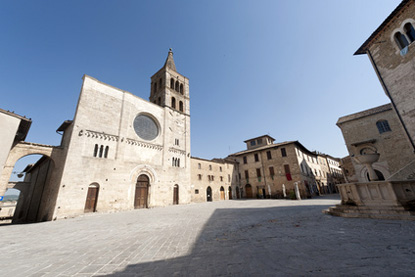Introduction

Located at the heart of the scenic Apennine Mountains, Umbria is the smallest, least populous and most sparsely populated region in Central Italy. The region is named after the Umbri, an ancient Italic tribe absorbed by the expansion of the Romans.
Umbria is one of the wildest Italian regions, an idyllic blend of lush rolling hills and forested mountains enjoying a similar climate to that of Tuscany, and dotted with immaculate Medieval towns. Umbria has no industry and few famous natives, apart from Francis of Assisi, the patron saint of Italy, after whom San Francisco in California was named.
The region's three top destinations are the beautifully preserved historic towns of Assisi and Orvietto and the university town of Perugia, but Umbria has many more great places to explore. The main natural attraction is the Marmore Falls, the tallest man-made waterfalls in the world, and the flower fields of the Monti Sibillini National Park.
Cuisine
Forget about seafood in this landlocked region. Here everything is about a good roasting with olive oil and herbs. Traditional dishes are heavy on game (wild boar, hare, pheasant, goose, pigeon) and sausages. Frogs and snails are local delicacies. Norcia is particularly renowned for its black truffles, but also for its cheeses (pecorino) and cured meat products (prociutto di Norcia, budellaccio di Norcia, mazzafegati). The Tiber and Lake Trasimeno are rich sources of freshwater fish such as trouts, perches, pikes, carps, eels, barbels, graylings, and tenches.
Typical Umbrian dishes include agnello scottadito (grilled lamb chops), fagiano in salmì (sautéed pheasant sliced and reheated in sauce), galantina (boneless chicken stuffed with beef, boiled eggs, cheese, pistachios, nutmeg and pepper), piccione alla ghiotta (roasted pigeon with the entrails cooked in a sauce), and porchetta (a fatty boneless pork roasted with herbs). Common varieties of pasta are strangozzi (shaped like shoelaces; typically eaten with truffles), pappardelle (wide tagliatelle), umbricelli (thick spaghetti), and cappelletti (a sort of tortellini).
Umbria has 14 DOC wines, 70% of which are produced in the province of Orvieto. The region is mostly renowned for its white wines, although its two DOCG, Sagrantino di Montefalco and Torgiano Rosso Riserva, are red wines, and both from the province of Perugia.
Attractions
North
| Gubbio |
|---|

 Gubbio. |
Other attractions

Città di Castello

Montone

Tuoro sul Trasimeno
| Castiglione del Lago |
|---|

 Castiglione del Lago. |
Centre
| Perugia |
|---|

 Perugia. |
| Bevagna |
|---|

 Bevagna. |
Other attractions

Colfiorito

Foligno

Montefalco
South
| Castelluccio di Norcia |
|---|

 Castelluccio is located in the Umbrian section of the Monti Sibillini National Park, near Norcia. Located on top of a hill, it is famous for the panorama of red poppies and yellow rapeseed fields. Plenty of sheep and horses roam across the surrounding hills and plains. |
| Spoleto |
|---|

 Spoleto. |
| Narni |
|---|

 Narni. |
Other attractions

Trasimeno Lake

Trevi

Lugnano in Teverina

Terni
Travel Community
Ask your travel questions on the Italy Travel Forum
| Eupedia's Rating System |
|---|
Cities, towns, villages & historic buildings
- : Local interest
- : Moderately interesting
- : Outstanding place
- : Best of the country - shouldn't be missed
- : Best of Europe
Natural attractions
- : Local interest
- : Moderately interesting
- : Highly recommended
- : World-class natural attraction
- ※ : UNESCO World Heritage site
|